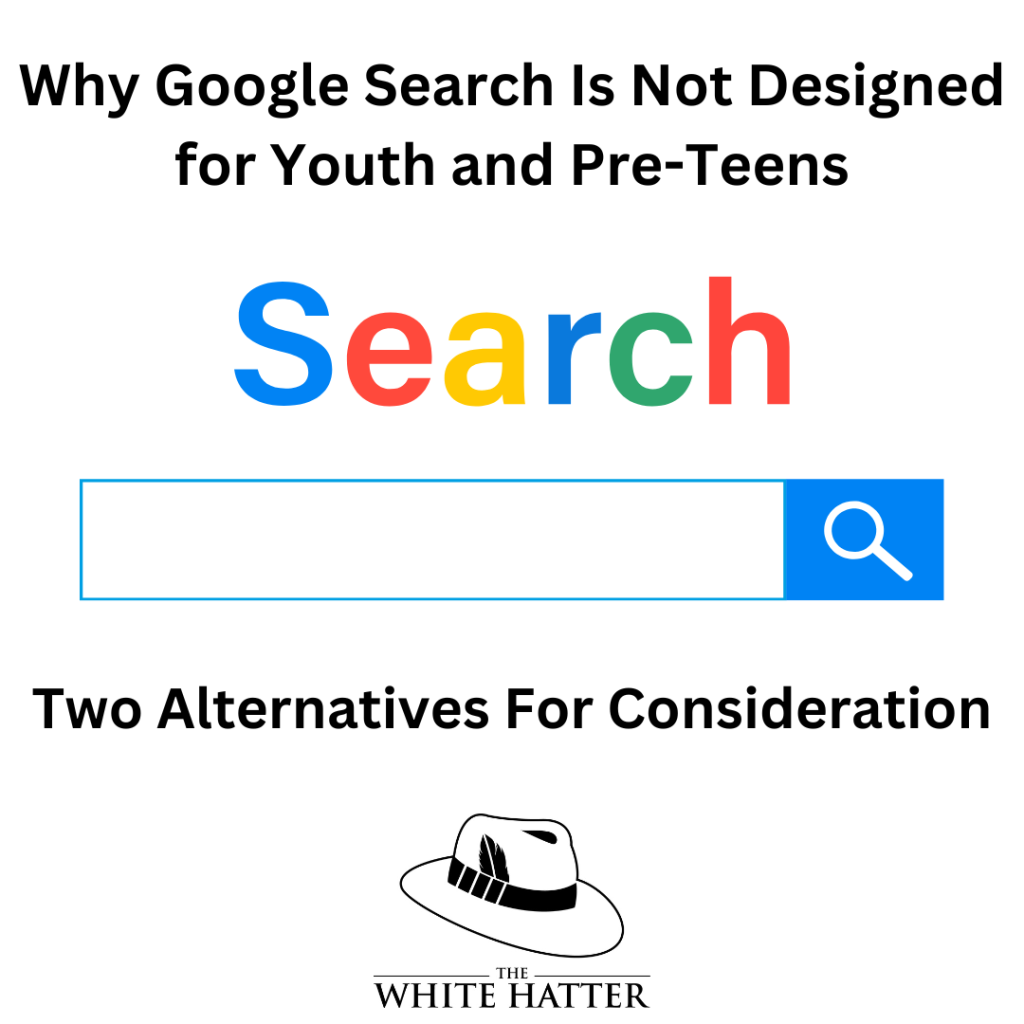Why Google Search Is Not Designed for Youth and Pre-Teens
- The White Hatter

- Feb 1
- 2 min read
Updated: May 14

Google is an incredibly powerful tool, arguably one of the most influential inventions since its launch in 1998. With a few keystrokes, it grants access to the vast expanse of human knowledge. But while Google is designed to serve billions of users worldwide, it is not designed with young children in mind.
Many parents and caregivers assume that because Google is widely used in education and by adults for everyday tasks, it must be safe for youth and pre-teens. However, that assumption overlooks the fundamental reality: Google is a search engine built for an adult world, not a child-friendly one.
Google does not inherently block violent, sexual, or otherwise inappropriate content from search results. While Google SafeSearch settings exist, they are not foolproof and can be easily turned off by tech-savvy kids. Even with SafeSearch enabled, children can still encounter disturbing content, misinformation, or extremist views that they may not have the maturity to process.
A simple misspelling or an innocent search query can lead to explicit results. For example, a child searching for "cute kitten videos" may eventually stumble upon content that is not at all related to kittens, but rather a porn site. The internet is unpredictable, and Google's job is to find results and not to determine what is developmentally appropriate.
There are two kid friendly search engines that we have tested that we believe can help reduce risks of accessing inappropriate content:
#1: Kiddle https://www.kiddle.co/
#2: WackySafe https://wackysafe.com/
NOTE - both platforms use cookies to personalize content and adds, and to analyze their traffic. They also share information about your use of their site with their advertising and analytics partners who may combine it with other information you've provided to them or they've collected from your use of their services. If you wish to opt out of Google cookies you may do so by visiting the Google privacy policy page.
While Google can be an invaluable resource for older teens and adults, it is not inherently designed with children in mind. Assuming it is safe for young users without safeguards can expose them to inappropriate content, misinformation, or harmful material. Instead of outright banning access, parents and caregivers should take an active role in guiding their children’s online experiences.
By using kid-friendly search engines, enabling parental controls, and fostering digital literacy, families can create a safer and more educational online environment. A balanced approach, combining supervision, education, and age-appropriate tools will empower children to navigate the internet responsibly while minimizing risks.
Digital Food For Thought
The White Hatter
Facts Not Fear, Facts Not Emotions, Enlighten Not Frighten, Know Tech Not No Tech














